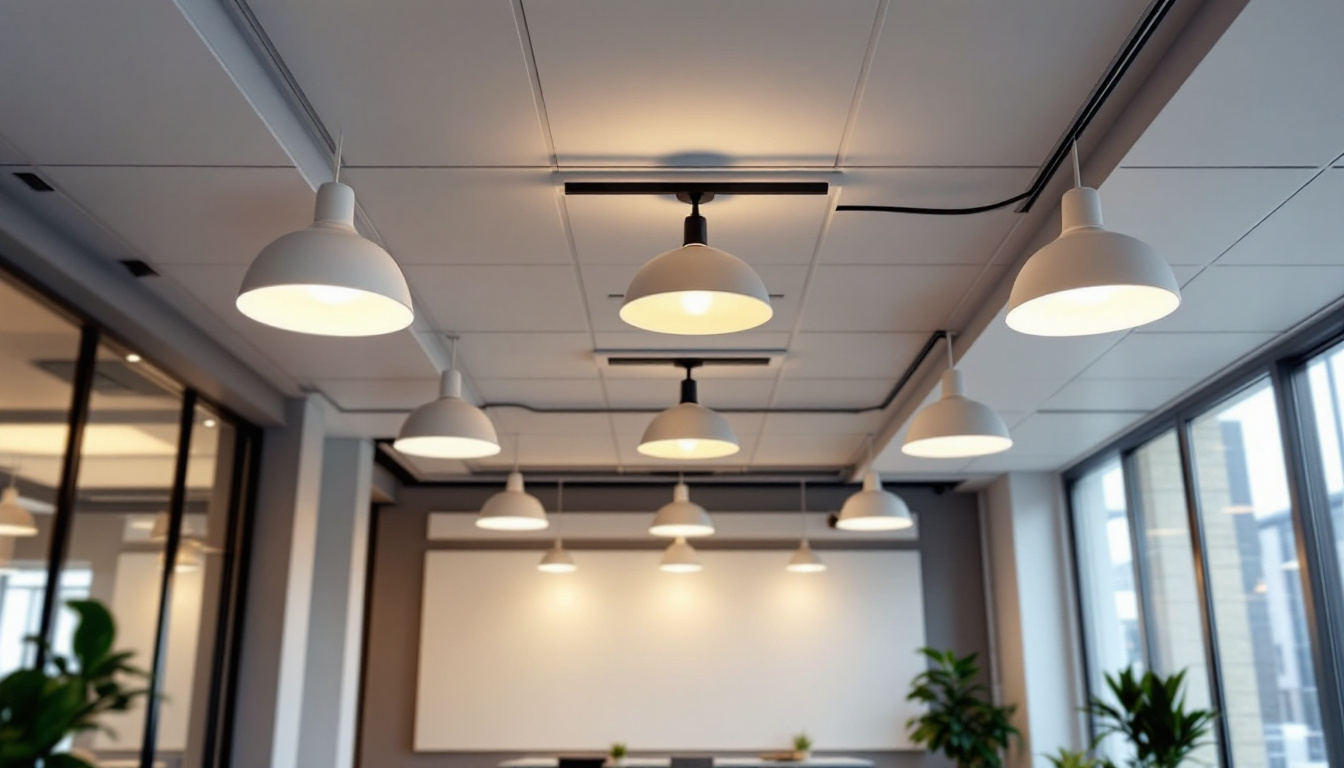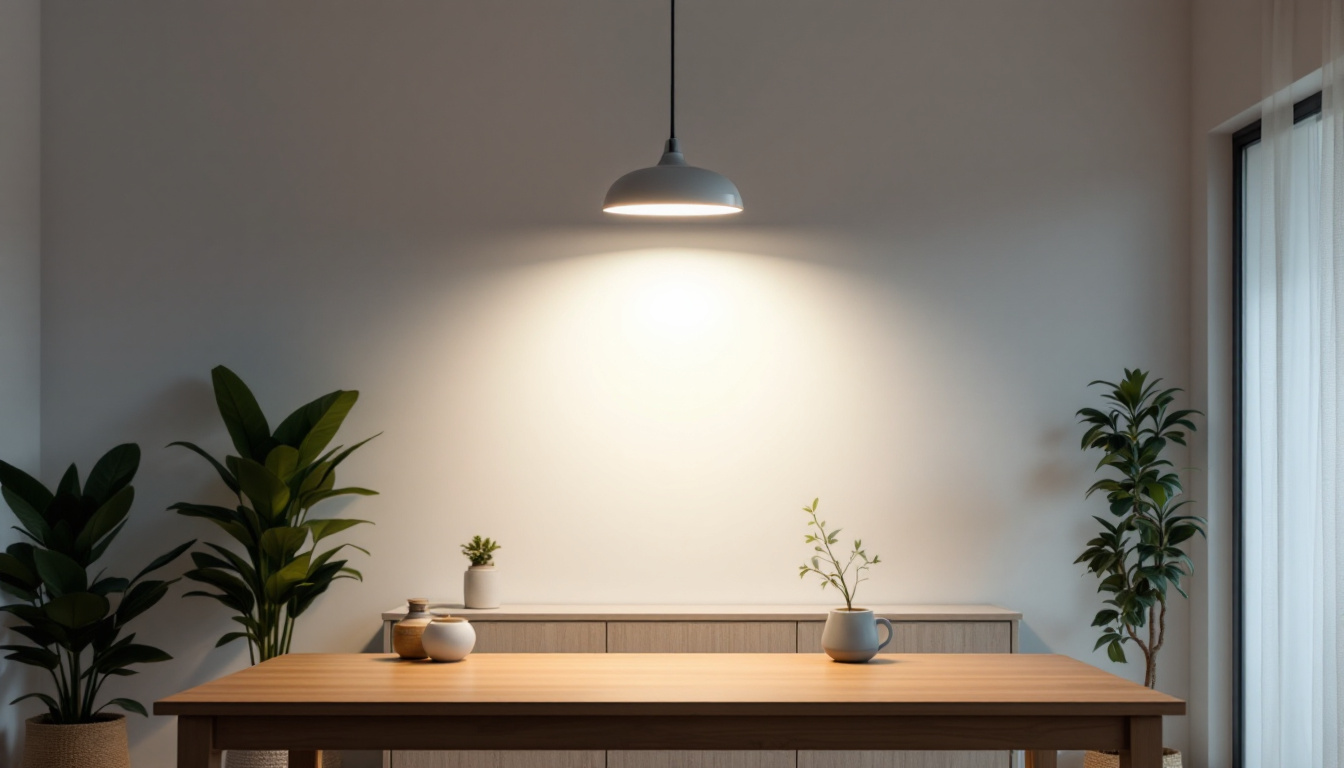
In the world of lighting, the base of a lightbulb is often overlooked, yet it plays a crucial role in the overall efficiency and effectiveness of lighting systems. For lighting contractors, understanding the various types of lightbulb bases and their implications can significantly enhance project outcomes. This article delves into the importance of lightbulb bases and how they can improve efficiency for lighting contractors.
Lightbulb bases are the components that connect the bulb to the fixture, providing both electrical contact and mechanical support. The type of base used can influence not only the compatibility of the bulb with fixtures but also the overall performance and energy efficiency of the lighting system. Understanding these bases is essential for both consumers and professionals in the lighting industry, as it plays a critical role in ensuring that lighting solutions are effective and reliable.
There are several types of lightbulb bases available on the market, each designed for specific applications. The most common types include:
Ensuring compatibility between the bulb base and the fixture is essential for optimal performance. An incompatible base can lead to poor electrical connections, resulting in flickering lights or even complete failure of the lighting system. For lighting contractors, understanding the specifications and requirements of each base type is crucial for successful installations.
Moreover, using the correct base can enhance energy efficiency. For instance, LED bulbs with the appropriate base can significantly reduce energy consumption compared to traditional incandescent bulbs. This not only benefits the environment but also reduces costs for clients, making it a win-win situation for contractors and customers alike.
In addition to energy efficiency, the choice of lightbulb base can also affect the quality of light produced. Different bases can support various technologies that emit light in distinct ways. For example, LED bulbs often come with bases designed to maximize light output while minimizing heat generation, which can prolong the lifespan of both the bulb and the fixture. Additionally, some bases are designed to accommodate dimming capabilities, allowing users to adjust brightness levels according to their needs, thus enhancing the overall ambiance of a space.
Furthermore, the aesthetic appeal of light fixtures can be influenced by the type of base used. Certain designs may require specific bases to achieve a desired look or functionality. For instance, decorative fixtures often utilize candelabra bases to create a vintage or elegant feel, while modern designs may favor sleek, minimalist bases. Understanding these nuances can help consumers make informed decisions when selecting lighting solutions that not only meet their practical needs but also align with their design preferences.
Choosing the right lightbulb base can lead to significant efficiency gains in various aspects of lighting projects. From installation to energy usage, the implications of base selection are far-reaching.
When contractors select lightbulbs with bases that match existing fixtures, installation becomes a more straightforward process. This efficiency in installation can lead to reduced labor costs and faster project completion times. For example, using a bi-pin base in a compatible fixture allows for quick replacement without the need for additional tools or adaptations.
Additionally, standardized bases across a project can simplify inventory management. Contractors can stock a limited variety of bulbs, reducing overhead costs and ensuring that replacements are readily available when needed. This approach not only saves time but also minimizes the risk of project delays due to missing components, allowing contractors to maintain their schedules and enhance client satisfaction.
Furthermore, the ease of installation can also improve safety on the job site. When workers are familiar with a limited range of bases, the likelihood of errors during installation decreases. This familiarity can lead to a more efficient workflow, as team members can quickly adapt to the task at hand without the confusion that often accompanies a diverse array of bulb types.
Energy efficiency is a primary concern for many lighting contractors, particularly as clients become more environmentally conscious. By opting for LED bulbs with appropriate bases, contractors can significantly reduce energy consumption. LED technology is designed to provide the same level of brightness as traditional bulbs while using a fraction of the energy.
Moreover, many LED bulbs come with advanced features such as dimming capabilities and smart technology, which further enhance energy savings. By educating clients on the benefits of these options, contractors can position themselves as knowledgeable professionals committed to sustainability. The integration of smart technology not only allows for remote control of lighting but also enables users to monitor energy usage in real-time, providing valuable insights that can lead to further reductions in consumption.
In addition to immediate energy savings, the long lifespan of LED bulbs means that clients will benefit from lower replacement costs over time. This durability is particularly advantageous in commercial settings, where lighting fixtures are often used for extended hours. By highlighting the long-term financial benefits of selecting the right bulb base, contractors can make a compelling case for investment in energy-efficient lighting solutions that align with their clients’ sustainability goals.
The choice of lightbulb base not only affects installation and energy efficiency but also has a direct impact on maintenance and the longevity of the lighting system. Understanding these factors can help contractors provide better service to their clients.
Using high-quality bulbs with the right bases can lead to reduced maintenance needs over time. For instance, LED bulbs typically have a longer lifespan than traditional incandescent or halogen bulbs. By selecting LED options with compatible bases, contractors can ensure that clients experience fewer outages and less frequent replacements.
This reduction in maintenance not only saves clients money but also enhances their satisfaction with the lighting system. Happy clients are more likely to recommend contractors to others, leading to increased business opportunities. Furthermore, fewer maintenance calls mean that contractors can allocate their resources more efficiently, focusing on new projects rather than constantly addressing issues with existing installations. This can significantly improve a contractor’s reputation in the market, as reliability and quality of service are paramount in building lasting client relationships.
The longevity of a lighting system is influenced by the quality of the components used, including the lightbulb base. A sturdy, well-designed base can help prevent issues such as overheating and electrical failures, which can compromise the entire lighting system.
Contractors should consider the materials and construction of the bases they choose. For example, bases made from high-quality metals or heat-resistant plastics can withstand the rigors of continuous use, thereby extending the overall lifespan of the lighting system. Additionally, the design of the base can play a crucial role in heat dissipation. Bases that allow for better airflow can help maintain optimal operating temperatures, further enhancing the longevity of the bulbs. This attention to detail not only ensures a more reliable lighting solution but also aligns with energy efficiency goals, as systems that operate within their optimal temperature ranges consume less power and produce less waste heat.
The lighting industry is continuously evolving, and staying abreast of trends in lightbulb bases can provide contractors with a competitive edge. Understanding these trends can help contractors make informed decisions that align with future demands.
As smart home technology becomes more prevalent, the demand for smart lighting solutions is on the rise. Many of these solutions utilize specific lightbulb bases designed for compatibility with smart systems. For contractors, this means being knowledgeable about the various smart bulb options available and how they integrate with existing fixtures.
Smart bulbs often come with features such as remote control, scheduling, and color-changing capabilities. By offering these advanced options to clients, contractors can enhance the appeal of their services and cater to the growing market for smart home installations.
With increasing regulations around energy efficiency, the types of lightbulb bases available may change to meet new standards. Contractors must stay informed about these regulations to ensure compliance and to provide clients with the most efficient options.
As energy standards evolve, there may be a shift towards more energy-efficient bases and bulbs. Contractors who are proactive in adapting to these changes will be better positioned to serve their clients and maintain a competitive edge in the market.
Lightbulb bases may seem like a small component in the grand scheme of lighting projects, but their impact on efficiency, installation, maintenance, and future trends is significant. For lighting contractors, understanding the various types of bases and their implications can lead to better project outcomes and increased client satisfaction.
By selecting the right lightbulb bases, contractors can streamline installation processes, enhance energy efficiency, reduce maintenance needs, and stay ahead of industry trends. As the lighting landscape continues to evolve, being knowledgeable about lightbulb bases will empower contractors to deliver exceptional service and innovative solutions to their clients.
Ultimately, investing time in understanding lightbulb bases is an investment in the future success of lighting contractors. Embracing this knowledge will not only improve project efficiency but also position contractors as trusted experts in the ever-changing world of lighting.
Ready to enhance your lighting projects with the right lightbulb bases? Look no further than LumenWholesale for a comprehensive selection of spec-grade lighting products. Our commitment to quality and affordability ensures that you receive the best value on every purchase. Say goodbye to inflated markups and hello to superior lighting solutions that fit your budget. With free shipping on bulk orders, you can stock up on the industry’s finest without the hassle. Elevate your lighting game and discover wholesale lighting at the best value today!

Discover the essential resources lighting contractors rely on to master exterior light junction boxes.

Discover why staying informed about Satco LED lamps is crucial for lighting contractors.

Discover essential techniques and strategies for lighting contractors working with commercial drop ceilings.

Discover how 4 feet LED lights can revolutionize your lighting solutions with energy efficiency, versatility, and superior illumination.